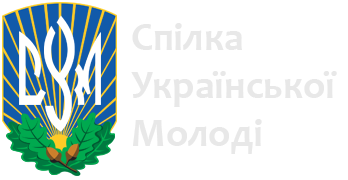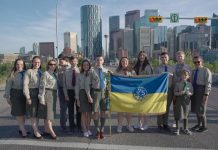Svyatoslav Lypovetskyj, CYM-Ternopil
Today, at a time when it’s difficult to keep a count of the multitude of commemorative events honoring the tragedy of the Holodomor, and in an age when such commemorations have become “traditional” in nature, it’s worth remembering how these community remembrances began. This is particularly so since the first community action which brought the subject of the Holodomor to the attention of the West happened 65 years ago, on the fifteenth anniversary of the tragedy.

Sunday, March 14, 1948 appears in numerous archival sources as the date of the first large scale commemorative event to have honored the victims of the Holodomor. The initiator of the action, and its organizer, was the Ukrainian Youth Association (CYM, to all who know it by that Ukrainian language acronym), an organization that had just two years earlier been formed from among the ranks of Displaced Persons Camps in postwar Germany. At that time the Ukrainian population in Germany DP camps is estimated to have been between 100 and 200 thousand individuals; they were largely unoccupied and had much free time to organize community life in the camps.
At around this time, members were hard at work at renewing the CYM tradition and ideal that was embodied by the heroes of the brutal SVU-CYM Trials of 1930, but also working particularly hard to unite a large portion of Ukrainian youth from the Greater Dnipro region. This was clearly reflected in the organization’s leadership, which almost fully consisted of naddnipryantsi, Ukrainians originating from central Ukrainian regions near the Dnipro.
During 1946-1947, CYM’s members built a wide network encompassing a large and growing DP membership. The organization’s first massive event was its Zdvyh, a large jamboree near the city of Munich. Encouraged by the turnout at this event, CYM’s Central Committee leadership decides to organize a large demonstration designed to bring to the center of attention among western nations the 1932-1933 Ukrainian Holodomor tragedy, which had taken place just 15 years earlier.

The initial concept was to bring together a central demonstration in the center of Munich, the largest city of the American Occupation Zone. But because Germany was divided into a number of occupational zones, holding a single nationwide event would clearly be impossible. Consequently, a decision was made to additionally hold separate demonstrations at individual camps of the English Zone. At three of that Zone’s camps – those at Hanover, Fallingbostel and Seedorf – over 3,000 persons demonstrated; at the last camp in the Zone, Ukrainians were joined by Estonians, Lithuanians, Latvians, Poles and Bylorussians – with 1,500 participants in all.

The Munich action was held on March 14, 1948 with a participation of 6,000 people. The American administration gave its permission to hold the rally at the city’s largest postwar church – the Church of Saint Luke – but with the provision that no political speeches would be permitted anywhere beyond the walls of the church. In this holy place, clergy of the Ukrainian Autocephalous Orthodox Church led those present in prayer with a requiem service for the souls of the victims. From there, thousands marched in columns along the streets of Munich. The organization’s archival documents show that 158 large wreaths were carried by representatives of individual DP camps and organizations; each wreath was borne by four individuals.
It’s notable that CYM, which was widely seen as a Banderite organization, was able to unite the community as a whole, including the pro-Melnyk organizations which funded and printed leaflets about the Holodomor in German and English. These leaflets were widely distributed throughout the city on March 14, particularly at the city’s rail station.
1948 would prove to be a crucial year for the camps of displaced persons; the year would mark the beginning of the mass exodus of emigrants from Germany to many countries of the world. The community commemorations on the 15th anniversary of the Holodomor which were so numerously attended on March 14, 1948 would serve not only to educate the Ukrainian population about the tragic events of 1932-33, but would also be the start of a tradition of yearly Holodomor commemorations in communities on many continents of the world.








